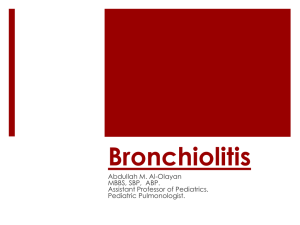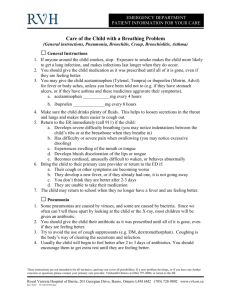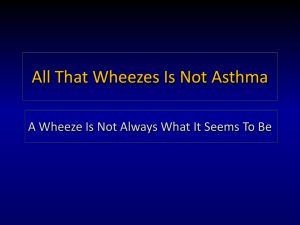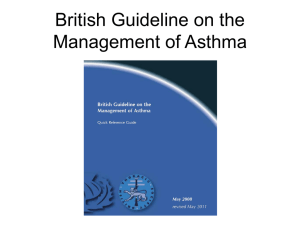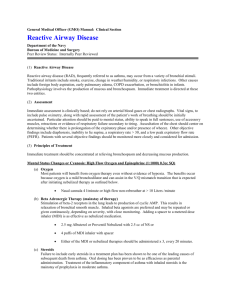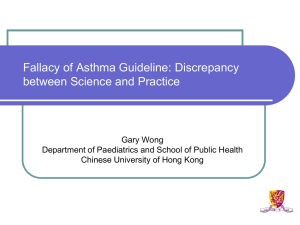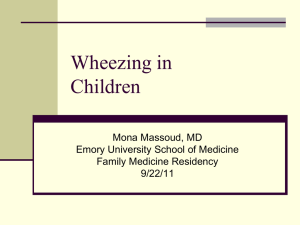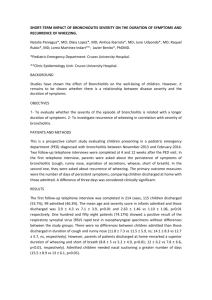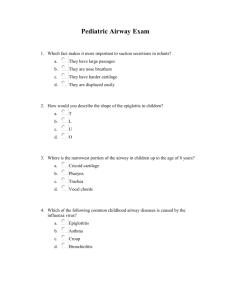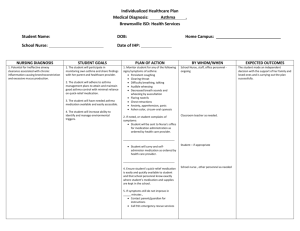Wheezing in Young Children
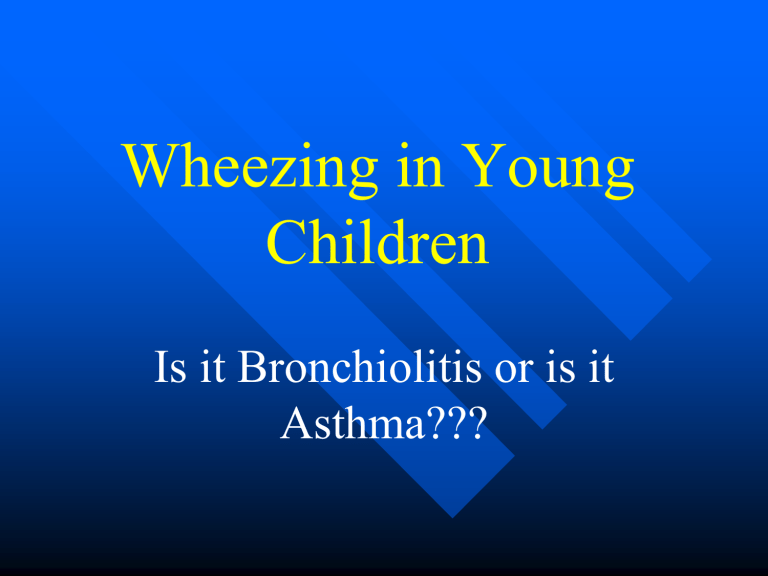
Wheezing in Young
Children
Is it Bronchiolitis or is it
Asthma???
Bronchiolitis
Bronchiolitis is an infectious, self-limited disease.
Its therapy is based on supportive care, oxygenation, hydration, and fever control.
The pathology results in obstruction of bronchioles from inflammation, edema, and debris, leading to hyperinflation, increased airway resistance, atelectasis, and ventilation-perfusion mismatching (decreased O2 saturations)
Bronchoconstriction has not been described.
Bronchiolitis
Despite the prominent role that inflammation plays in the pathogenesis of airway obstruction, corticosteroids have not proven beneficial in improving clinical status in several large, controlled multiinstitutional studies.
American Academy of Pediatrics -
Diagnosis and Management of
Bronchiolitis
Asthma Predictive Index (API)
Developed from a large longitudinal study from the Tuscon Children ’ s Respiratory Study which identified 3 groups of children who wheeze:
» Early wheezers
» Late onset wheezers
» Persistent wheezers
– API developed to differentiate “ Early wheezers ” from
“
Persistent wheezers
” or children who will develop asthma
API is the basis for the NHLBI recommendations for Initiating Long-term Controller Therapy in
Young Children (0-4 years)
The Asthma Predictive Index: a very useful tool for predicting asthma in young children.
Source: Journal of allergy and clinical immunology [0091-6749] Castro
Rodriguez, Jose yr:2010 vol:126
NHLBI Guidelines for Initiating Long-term
Controller Therapy in Young Children (0-4 years)
To reduce impairment in children who have:
– 1) 4 or more episodes of wheezing in the past year
» Wheezing lasted more than 1 day
» Affected sleep
» Risk factors for the development of asthma
1 of the following:
– Parental history of asthma OR
– Physician diagnosed atopic dermatitis
– Evidence of sensitization to aeroallergens
OR 2 of the following:
– Evidence of food allergy
– Wheezing apart from colds
– Peripheral blood eosinophilia (> 4%)
Initiating Long-term Controller Therapy in
Young Children (0-4 years)
To reduce impairment in children who have:
2) Consistently required symptomatic treatment
(reliever) more than 2 times/week for greater than 4 weeks
Should be considered for reducing risk in infants and young children who have 2 exacerbations requiring systemic steroids within 6 months
Asthma Therapy in Children 0-4
Years
Treatment is often in the form of a therapeutic trial
– Monitor response over 4-6 weeks
» If no response, stop therapy and reevaluate for other diagnosis
» If a clear positive response for at least 3 months
(good asthma control) step down as tolerated

